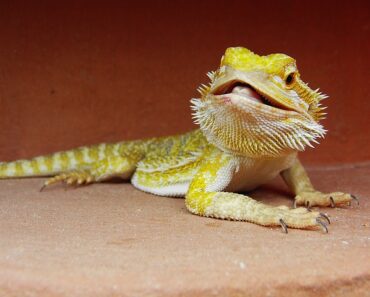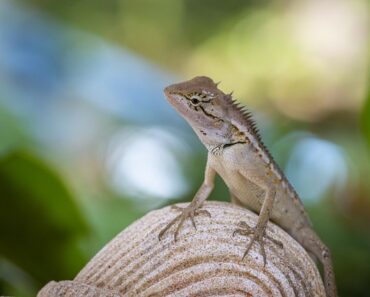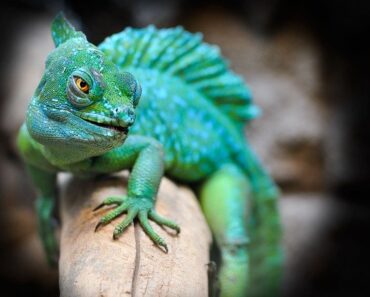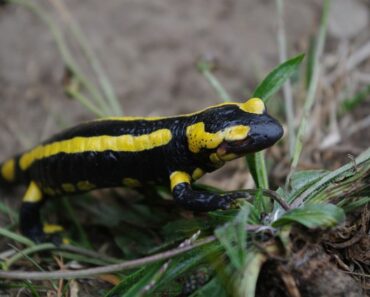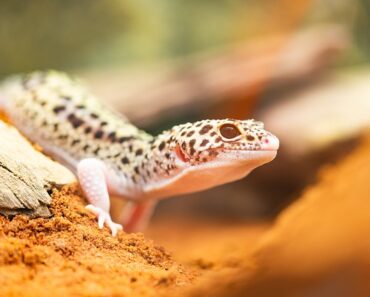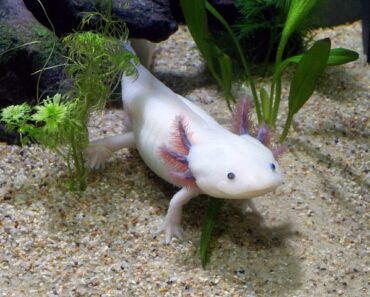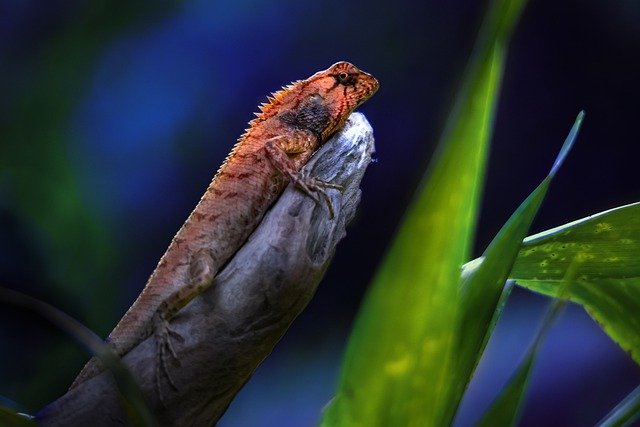
You are more and more numerous in France to own reptiles, and especially lizards (iguanas, gecko, pogona…). You can also decide to start breeding your beloved animals. Here are then some essential advices to start.
Sexing of lizards
Of course, to obtain baby lizards, it is essential to have a male and a female of the same species. As lizards do not have external genitalia, it is not so obvious to differentiate the female from the male! The methods of sexing lizards are different depending on the species considered, but there are some techniques commonly used. In some species, it is possible to differentiate the male and female according to phenotypic characteristics, such as color, presence or absence of a crest, or size. It is also important to know that male lizards, like snakes, have two hemi-penises, which can sometimes be felt by palpation; it is even possible to externalize them. Some species of lizards also have femoral pores, a series of orifices present on the inner side of the animal’s thighs. Depending on the species, only males have these pores, or both males and females have them, but the pores of males are larger than those of females, and therefore easier to observe, some time before the sexual maturity of the lizard. Moreover, in some species, the pre-anal pores are more developed in males than in females. If you are unsure, do not hesitate to ask the pet shop where you wish to buy your animal, they should be able to give you some information. It is also possible to consult your veterinarian, who will be able to determine the sex of your animal for sure.
Reproduction of lizards
Choice of breeders.
It is important to choose the breeders carefully. They are generally bought in pet stores or in breeding farms; some can be taken from the wild, but this is not ideal. Indeed, animals taken from the wild are often very heavily parasitized, so it is essential to treat them. In addition, an animal taken from the wild must undergo a quarantine and conditioning phase to adapt to its new environment. It should therefore not be reproduced hastily. On the other hand, the advantage of taking animals from the wild is the renewal of blood and therefore of genetics, which is more important than with animals born in captivity. In all cases, it is essential to ensure that your animals are not carriers of any disease that could be transmitted to their offspring. Thus, to ensure the good health of your animals, it is fundamental to consult a veterinarian, if possible specialized in reptile medicine. It is also preferable to acquire your breeding stock when they are still babies; this way, you will be able to see them grow and evolve before putting them to reproduction. If you really want to start breeding, breeding animals can also be chosen on aesthetic criteria (morphology, colors, etc…) according to the genetic lineage to which they belong.
Age of sexual maturity.
The age of sexual maturity is variable according to the species, and also according to the individual. It is generally around 2 years old. The general rule says that the larger species are mature later, while the smaller ones are earlier.
Stages of reproduction.
First of all, it is essential to know perfectly the physiological needs of your animal during the reproduction period. Once again, these are variable depending on the species of lizard considered. In particular, it is important to know if your lizard species is one of those that require a hibernation period before reproduction, or not. Necessary or not, this period can never be harmful, in any case. The duration and implementation of the stages also vary according to the species concerned, but several common features are worth noting :
The fattening stage.
During this stage, you must increase your animal’s usual ration. Indeed, the lizard must eat a lot, and store the fat in its tail, to use it later during the resting period. The food is generally tripled for females, doubled for males. Be careful however not to get obese animals, which will become too lazy to mate!
Hibernation.
In order to make your lizard hibernate, it is necessary to lower the temperature of the terrarium, after a short period of fasting. The hibernation temperature can vary between 10°C and 20°C. The hibernation can be total or not. During this period, your pet should not be fed, but should have water available continuously.
Mating.
To bring your lizard out of hibernation, it is necessary to raise the temperature of the terrarium gradually, until it reaches the optimal temperature for your lizard species. If the two lizards have not been bred together, it is necessary to place the female in the male’s terrarium, and not the other way around. It is necessary to leave the two animals together for a long time. If mating does not work, put the female back in her terrarium and try again a few days later. It is important to know that the male can mate with several females during the breeding period.
Fertilization.
It usually takes place just after mating. On the other hand, in certain species, fertilization can be delayed in time, while waiting for more favorable conditions. This is more often the case in the wild than in captivity.
Good to know: There are oviparous and ovoviparous lizards. Oviparous lizards lay eggs: the embryo develops in an egg outside the female’s body. Oviparous lizards do not lay eggs and give birth directly to babies; however, the embryo still develops in an egg inside the female’s body.
Before the eggs are laid.
The female must be housed in a box with a heat lamp. She must be able to eat as much as she wants. However, it is important to know that the oviparous female will tend to eat a lot before stopping eating 3 weeks before laying, whereas the ovoviparous female decreases her consumption progressively after fertilization. The female must also be able to find a comfortable and adequate place to lay her eggs. Sand, vermiculite or moss can be placed. Water bowls should be removed so that the female does not lay eggs in them. Once the ovoviparous female has given birth to her young, they should be removed as soon as possible to prevent her from eating them.
Incubation of eggs of oviparous lizards.
Immediately after laying, the eggs should be collected and placed in an incubation box. Care must be taken to leave the eggs in the same direction in which they were laid. If two eggs are stuck together, leave them this way. The incubation box should be heated and very moist (much more than a normal terrarium). In some species, the incubation temperature of the egg influences the sex of the babies that will be born. The temperature must be monitored daily and adapted to the lizard species concerned. The bottom must be wet and soft (vermiculite or wet moss). The humidity must be sufficient and droplets must be present on the edge of the box. Otherwise, spray the eggs regularly with water. The box must be kept in semi-darkness. The incubation period varies according to the species (usually 2 to 3 months). It may take a few days for all the eggs to hatch.
Care for newborns.
The young must be identified (date of birth, parents, color, weight…). They should preferably have a terrarium each, to avoid fights. The food depends of course on the species concerned (insectivore, omnivore, etc…). You can add minerals and vitamins to the food distributed.
Here is some information we can give you about the sexing and reproduction of lizards. This is not a step to be taken lightly and you must be very precise about the characteristic conditions of each species.

